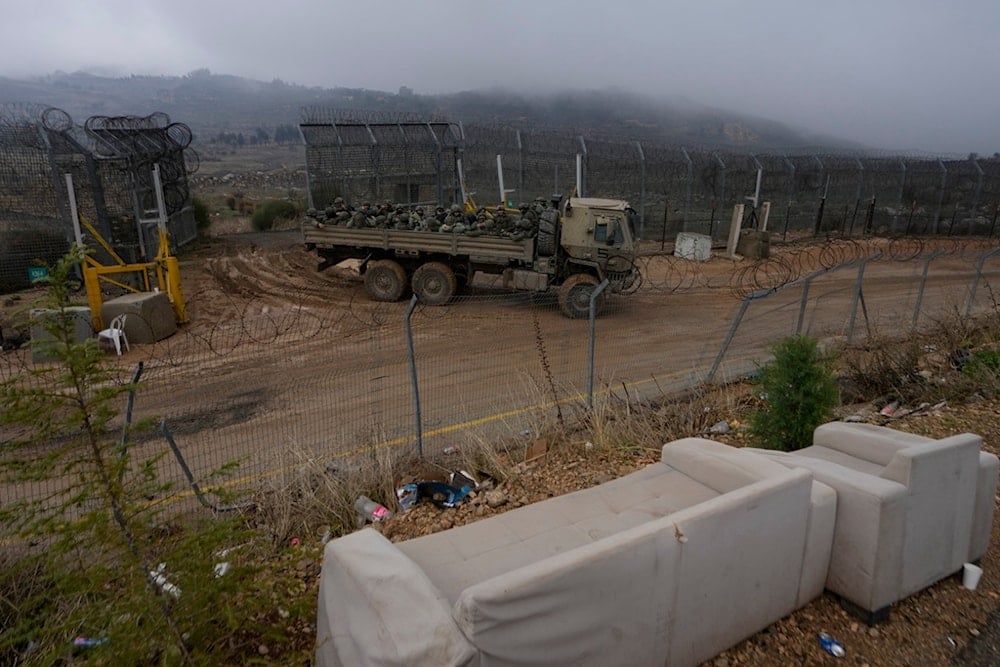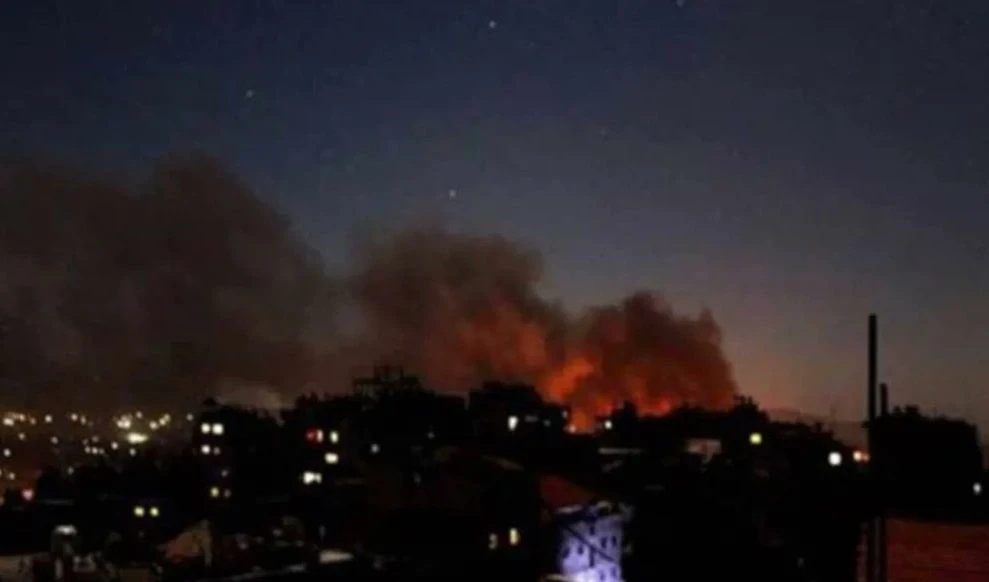Satellite images show seven new IOF outposts in Syria: Haaretz
These positions extend from Syrian Mount Hermon in the northern part of the demilitarized zone to Tel Kudna in the south, near the occupied Palestine-Syria-Jordan border triangle.
-

Israeli soldiers stand on an armored vehicle after crossing the security fence, from the buffer zone near the so-called Alpha Line that separates the Israeli-occupied Golan Heights from Syria, in the town of Majdal Shams, Sunday, Dec. 22, 2024 (AP)
Satellite imagery has revealed Israeli troop deployments along the Syrian border, showing that the Israeli military has established at least seven new outposts, the Israeli newspaper Haaretz reported on Tuesday.
These positions extend from Syrian Mount Hermon in the northern part of the demilitarized zone to Tel Kudna in the south, near the occupied Palestine-Syria-Jordan border triangle.
The newly established bases are located in Syrian Mount Hermon, Hader, Jubata al-Khashab, al-Hamidiyah, Quneitra, al-Qahtaniyah, and Tel Kudna.
Following the collapse of Bashar al-Assad's regime, Israeli forces moved into the demilitarized zone between "Israel" and Syria and seized strategic positions in southern Syria.
Israeli Security Minister Israel Katz had said that the Israeli military will remain stationed at the summit of Mount Hermon indefinitely.
Mount Hermon, a vast cluster of snowcapped peaks overlooking the Syria-Lebanon border, provides a strategic vantage point over the Damascus countryside and the Israeli-occupied Golan Heights; a Syrian territory "Israel" occupied during the 1967 war.
Israeli occupation Prime Minister Benjamin Netanyahu had stressed the occupied Syrian Golan Heights were Israeli "for eternity".
Netanyahu has also instructed the military to prepare to remain in the Syrian Mount Hermon area and the UN-patrolled buffer zone until at least the end of 2025.
The premier emphasized that Israeli forces would remain stationed there "until another solution ensuring Israel's security is found."
In December, the Israeli military began restructuring the demilitarized zone to ensure a long-term military presence, with no defined timeline for withdrawal, Haaretz mentioned.
As part of this effort, the military established new outposts, equipped with living quarters, command centers, medical clinics, showers, and restrooms, which now serve as operational hubs for its forces in the region.
The newspaper mentioned that the Israeli military's Northern Command logistics division, in coordination with the infrastructure division within the Technology and Logistics Directorate, installed specialized infrastructure and equipment to withstand the Golan Heights' extreme weather conditions.
Upgrades include buildings with enhanced insulation against the cold, heating systems, generators, and water-heating systems, ensuring that troops can be stationed in the area for extended periods.
IOF to maintain long-term presence in Syria backed by Trump: JPost
Last week, The Jerusalem Post reported that US President Donald Trump's administration will support the Israeli military's continued maintenance of a "buffer zone" in Syria for the foreseeable future.
While the European Union and the United Nations have made substantial progress toward normalizing relations with Syria’s new regime, led by Ahmad al-Sharaa—culminating in a major summit in Paris on Thursday—"Israel" remains confident that Washington understands its concerns that the new Syrian leadership could be a "wolf in sheep’s clothing," the report indicated.
The Israeli news website revealed that even if the EU and UN increase pressure on "Israel" to withdraw from Syrian territory in the coming months, the Israeli military is likely to remain in the "buffer zone" for an extended period as long as it retains backing from the Trump administration.
It added that with Syrian interim president al-Sharaa refraining from committing to elections for at least four years, "Israel" argues that the true nature of his regime may not become evident even by the end of 2025.
While Trump has signaled a desire to disengage from Syria and withdraw remaining US forces there, The Jerusalem Post cited Israeli officials who believe this does not affect his continued support for "Israel’s" presence in the buffer zone.
Until recently, "Israel" had faced increasing pressure to consider withdrawing from the "buffer zone", particularly given al-Sharaa’s repeated public assurances that he would uphold the 1974 armistice between Syria and "Israel" and his tangible steps toward reintegration with the West.
However, The Jerusalem Post highlighted that new revelations indicate that the Trump administration’s support for "Israel’s" position in Syria remains unwavering, even two months after the establishment of the "buffer zone" on December 8.
Read more: Israeli occupation deploy reinforcement in Southern Syria: Exclusive

 4 Min Read
4 Min Read









